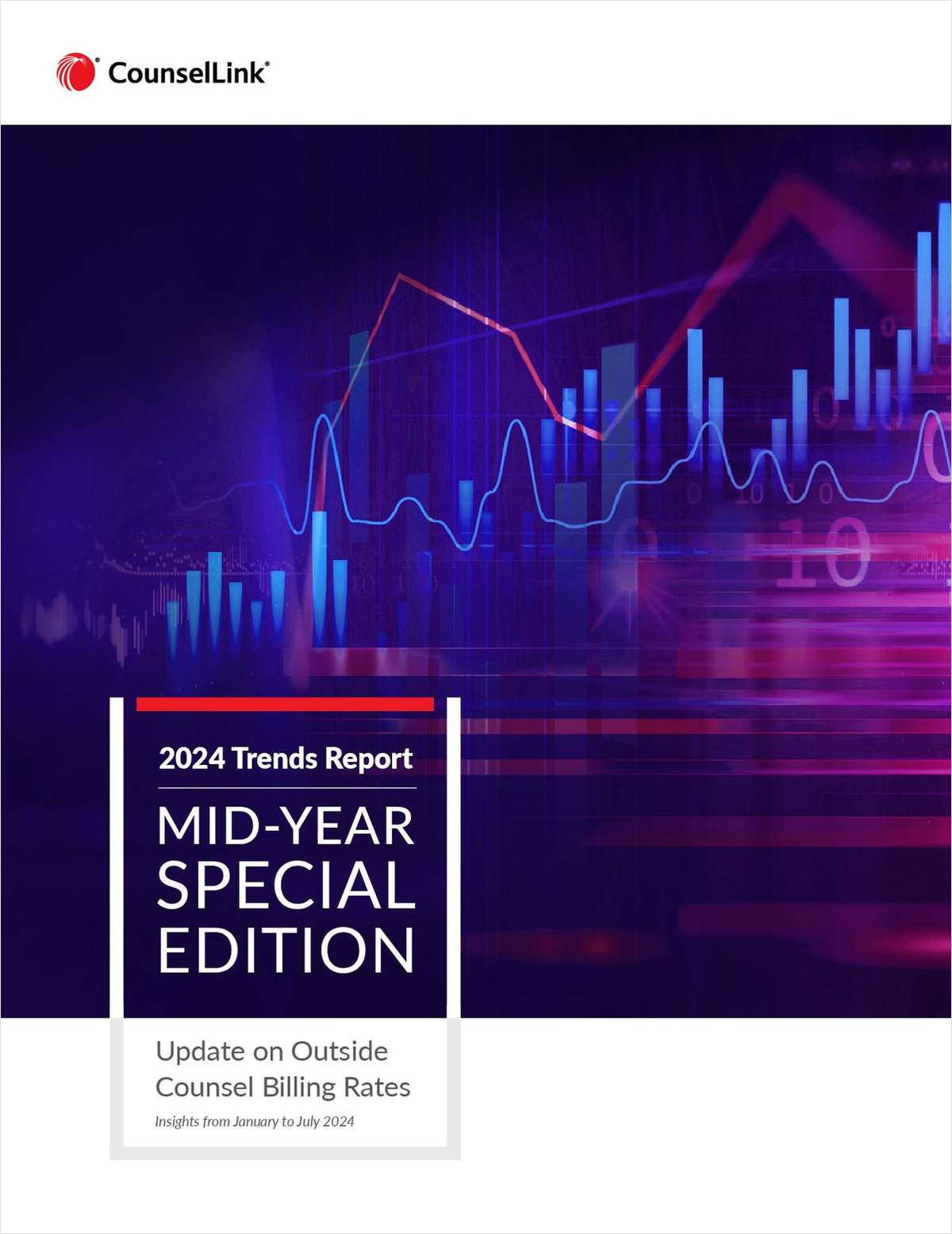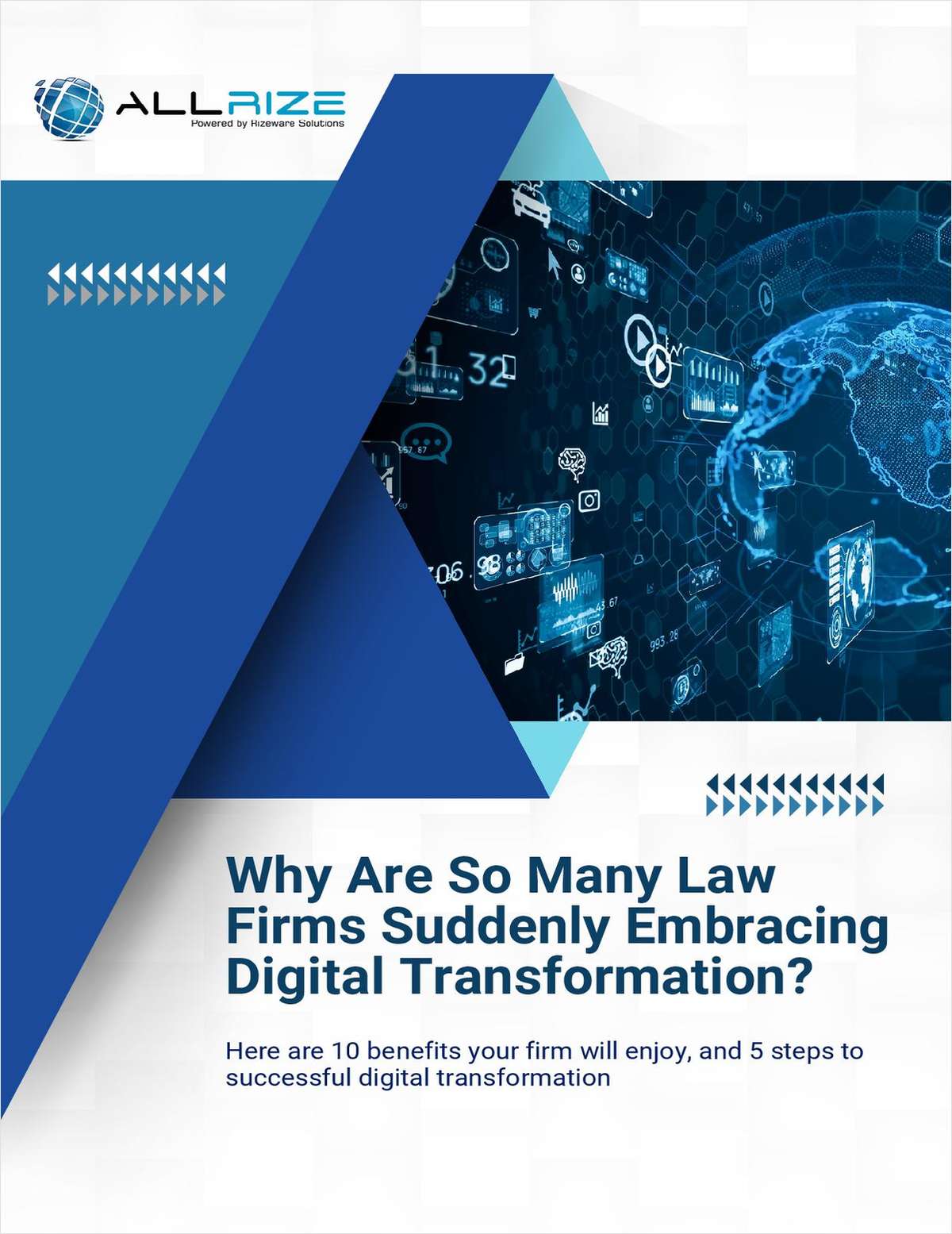Limited Scope Representation: A Fact of Life, But Risky for Attorneys
While attorneys should expressly limit their representation, they must understand how to do it and the restrictions on their ability to do so.
January 14, 2016 at 08:55 AM
8 minute read
The original version of this story was published on New Jersey Law Journal
The practice of limiting the scope of an attorney's representation has become an integral part of most private attorneys' practices today. It can be a vehicle to assure the client and attorney agree on what services the attorney is being asked to perform, but such agreements create risks for the attorney because such limitations are at odds with an attorney's general duty to represent a client. While attorneys should expressly limit their representation, they must understand how to do it and the restrictions on their ability to do so.
RPC 1.2(c) explicitly allows an attorney to limit the scope of the representation “if the limitation is reasonable under the circumstances and the client gives informed consent.” What is “reasonable” is not defined by RPC 1.2(c) or the attendant comments. Sources suggest that “reasonable” is “what is not harmful to the client.” Hazard and Hodes, The Law of Lawyering, §5.10. This caveat is potentially so broad that it may effectively preclude an attorney from limiting potential liability. Thus, this rule, lauded by many for making legal services more readily available, is fraught with risk stemming from its ill-defined contours. A well-crafted engagement letter, recurring re-evaluation of the relationship, and candid communications with the client regarding the implications of the limited representation are necessary.
The fundamental purpose of an engagement letter is to define the terms under which the relationship between the parties is governed, including the scope of the relationship. Provided the requirements of RPC 1.2(c) are met, and there are no violations of other applicable ethics or court rules, the following limited representations are permissible in New Jersey: investigation; simple advice; aid in completing court or other forms; brief service such as the communication of a client's position to a third party; negotiation; suggestions on how to approach litigation; and the drafting of pleadings and briefs. Advisory Committee on Professional Ethics Opinion 713, 191 N.J.L.J. 302 (2008).
NOT FOR REPRINT
© 2024 ALM Global, LLC, All Rights Reserved. Request academic re-use from www.copyright.com. All other uses, submit a request to [email protected]. For more information visit Asset & Logo Licensing.
You Might Like
View All

Trending Stories
Who Got The Work
Dechert partners Andrew J. Levander, Angela M. Liu and Neil A. Steiner have stepped in to defend Arbor Realty Trust and certain executives in a pending securities class action. The complaint, filed July 31 in New York Eastern District Court by Levi & Korsinsky, contends that the defendants concealed a 'toxic' mobile home portfolio, vastly overstated collateral in regards to the company's loans and failed to disclose an investigation of the company by the FBI. The case, assigned to U.S. District Judge Pamela K. Chen, is 1:24-cv-05347, Martin v. Arbor Realty Trust, Inc. et al.
Who Got The Work
Arthur G. Jakoby, Ryan Feeney and Maxim M.L. Nowak from Herrick Feinstein have stepped in to defend Charles Dilluvio and Seacor Capital in a pending securities lawsuit. The complaint, filed Sept. 30 in New York Southern District Court by the Securities and Exchange Commission, accuses the defendants of using consulting agreements, attorney opinion letters and other mechanisms to skirt regulations limiting stock sales by affiliate companies and allowing the defendants to unlawfully profit from sales of Enzolytics stock. The case, assigned to U.S. District Judge Andrew L. Carter Jr., is 1:24-cv-07362, Securities and Exchange Commission v. Zhabilov et al.
Who Got The Work
Clark Hill members Vincent Roskovensky and Kevin B. Watson have entered appearances for Architectural Steel and Associated Products in a pending environmental lawsuit. The complaint, filed Aug. 27 in Pennsylvania Eastern District Court by Brodsky & Smith on behalf of Hung Trinh, accuses the defendant of discharging polluted stormwater from its steel facility without a permit in violation of the Clean Water Act. The case, assigned to U.S. District Judge Gerald J. Pappert, is 2:24-cv-04490, Trinh v. Architectural Steel And Associated Products, Inc.
Who Got The Work
Michael R. Yellin of Cole Schotz has entered an appearance for S2 d/b/a the Shoe Surgeon, Dominic Chambrone a/k/a Dominic Ciambrone and other defendants in a pending trademark infringement lawsuit. The case, filed July 15 in New York Southern District Court by DLA Piper on behalf of Nike, seeks to enjoin Ciambrone and the other defendants in their attempts to build an 'entire multifaceted' retail empire through their unauthorized use of Nike’s trademark rights. The case, assigned to U.S. District Judge Naomi Reice Buchwald, is 1:24-cv-05307, Nike Inc. v. S2, Inc. et al.
Who Got The Work
Sullivan & Cromwell partner Adam S. Paris has entered an appearance for Orthofix Medical in a pending securities class action arising from a proposed acquisition of SeaSpine by Orthofix. The suit, filed Sept. 6 in California Southern District Court, by Girard Sharp and the Hall Firm, contends that the offering materials and related oral communications contained untrue statements of material fact. According to the complaint, the defendants made a series of misrepresentations about Orthofix’s disclosure controls and internal controls over financial reporting and ethical compliance. The case, assigned to U.S. District Judge Linda Lopez, is 3:24-cv-01593, O'Hara v. Orthofix Medical Inc. et al.
Featured Firms
Law Offices of Gary Martin Hays & Associates, P.C.
(470) 294-1674
Law Offices of Mark E. Salomone
(857) 444-6468
Smith & Hassler
(713) 739-1250










